
How to Use MP1495 Step Down Voltage Regulator: Examples, Pinouts, and Specs
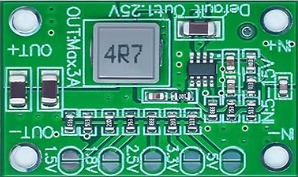
 Design with MP1495 Step Down Voltage Regulator in Cirkit Designer
Design with MP1495 Step Down Voltage Regulator in Cirkit DesignerIntroduction
The MP1495 is a high-efficiency step-down voltage regulator manufactured by HiLetGo. It is designed to convert a higher input voltage to a lower, regulated output voltage. This component integrates a power switch and supports adjustable output voltage, making it ideal for applications requiring compact, efficient, and reliable power conversion.
Explore Projects Built with MP1495 Step Down Voltage Regulator
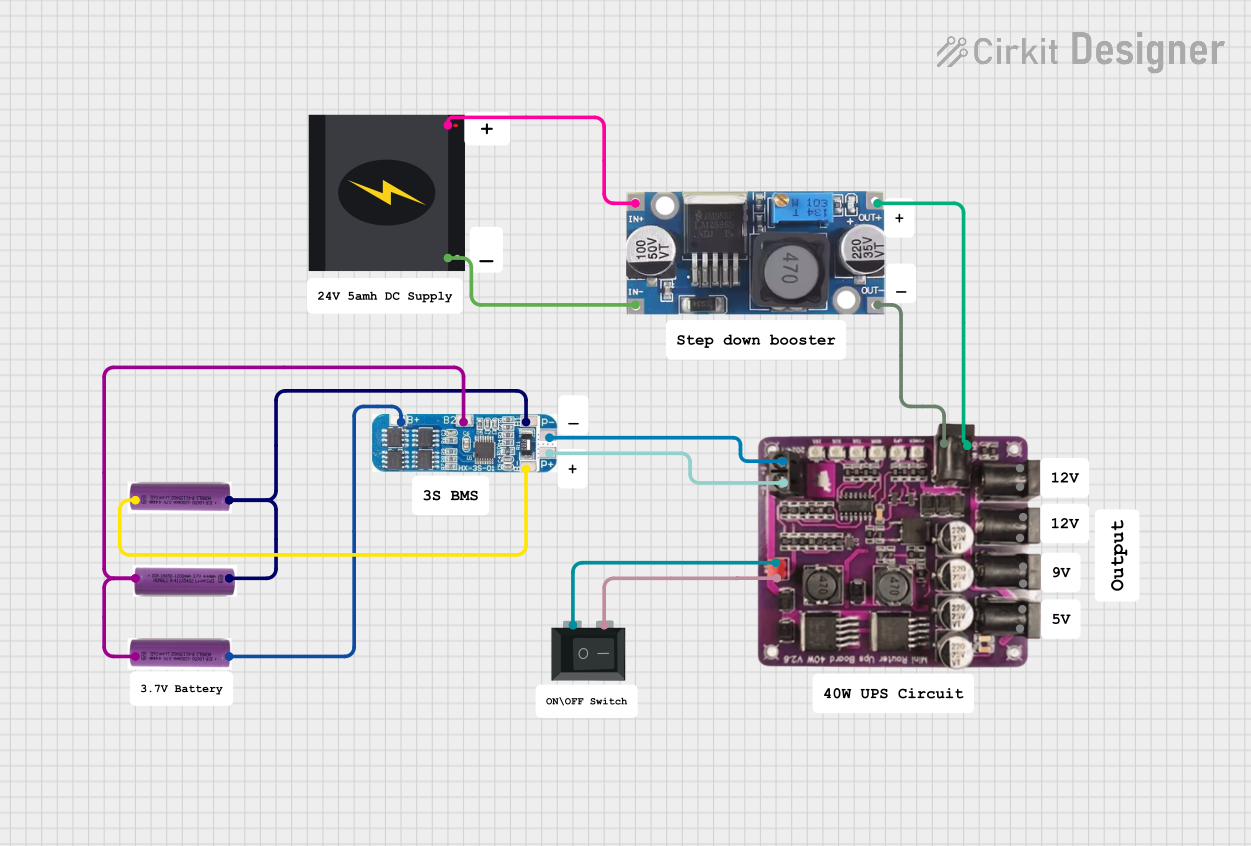
 Open Project in Cirkit Designer
Open Project in Cirkit Designer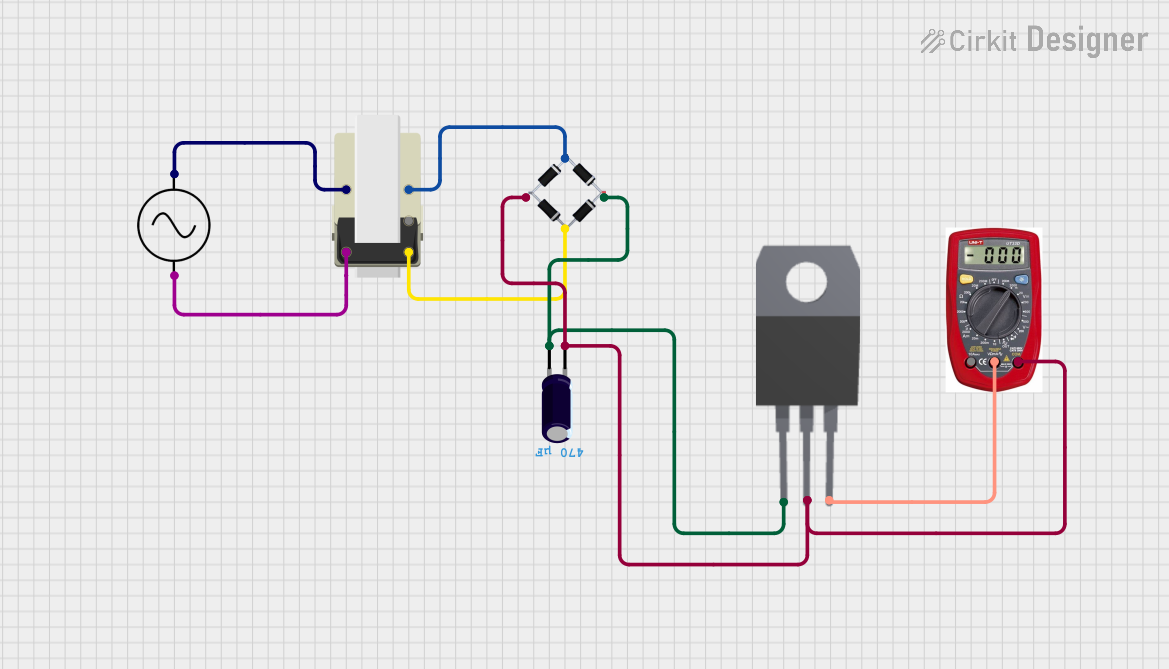
 Open Project in Cirkit Designer
Open Project in Cirkit Designer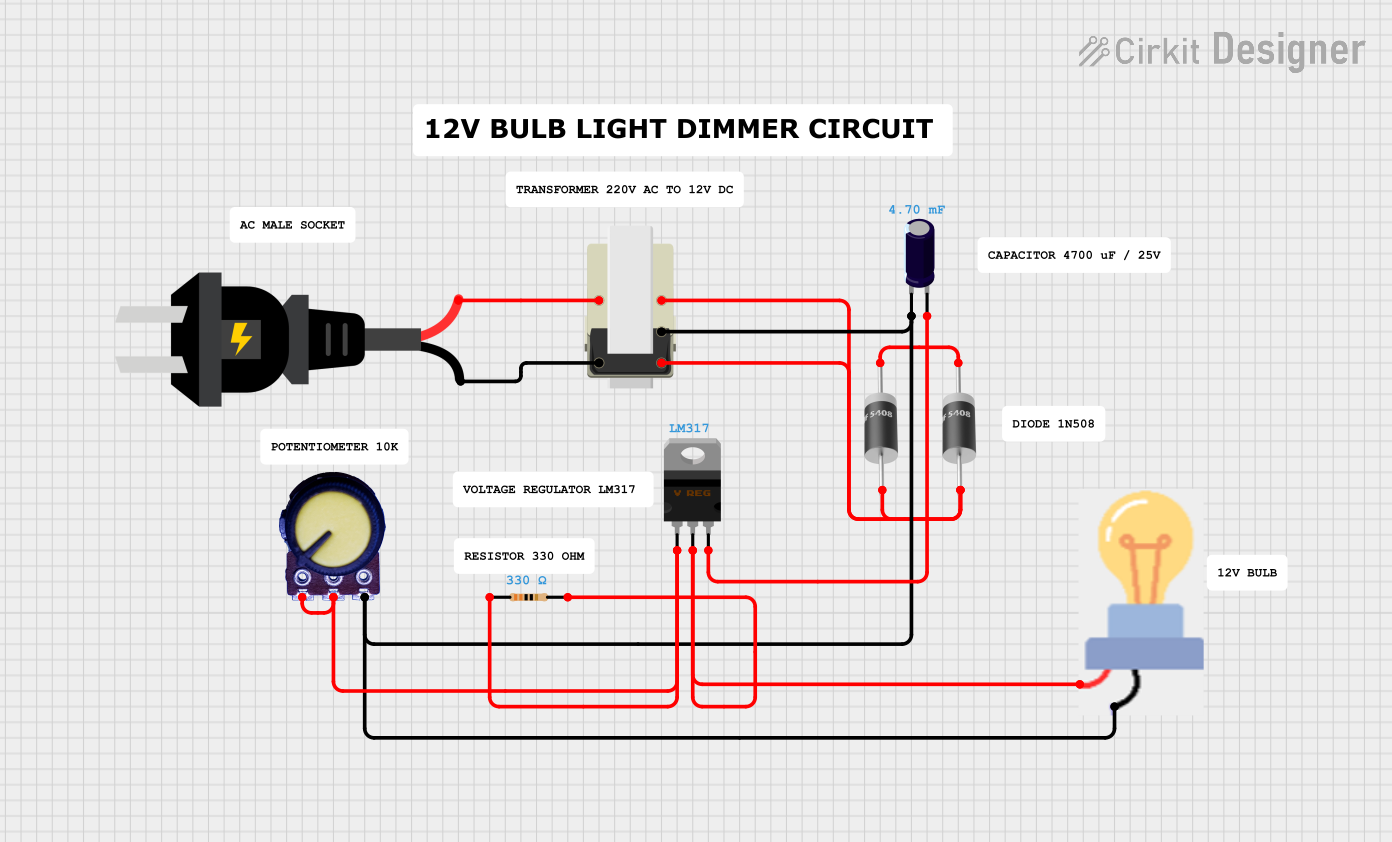
 Open Project in Cirkit Designer
Open Project in Cirkit Designer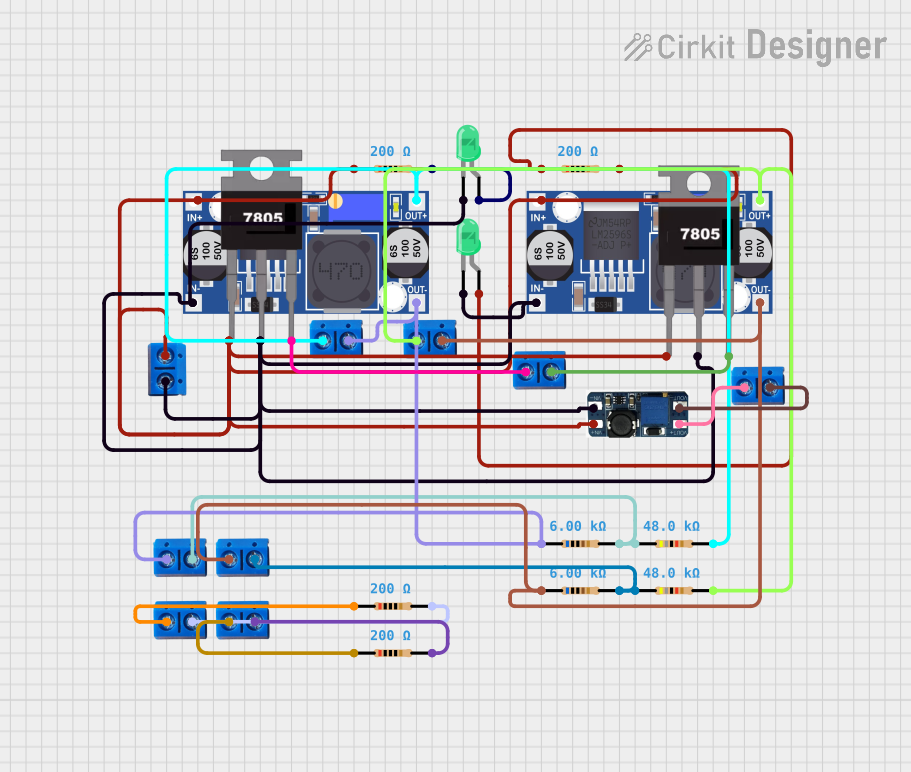
 Open Project in Cirkit Designer
Open Project in Cirkit DesignerExplore Projects Built with MP1495 Step Down Voltage Regulator

 Open Project in Cirkit Designer
Open Project in Cirkit Designer
 Open Project in Cirkit Designer
Open Project in Cirkit Designer
 Open Project in Cirkit Designer
Open Project in Cirkit Designer
 Open Project in Cirkit Designer
Open Project in Cirkit DesignerCommon Applications and Use Cases
- Power supply for microcontrollers and embedded systems
- Battery-powered devices
- Consumer electronics
- Industrial automation systems
- LED drivers and lighting systems
Technical Specifications
The MP1495 is a versatile component with the following key technical specifications:
| Parameter | Value |
|---|---|
| Input Voltage Range | 4.5V to 40V |
| Output Voltage Range | Adjustable (0.8V to 36V) |
| Output Current | Up to 3A |
| Switching Frequency | 500kHz |
| Efficiency | Up to 90% |
| Operating Temperature | -40°C to +125°C |
| Package Type | SOP-8 |
Pin Configuration and Descriptions
The MP1495 comes in an SOP-8 package with the following pinout:
| Pin Number | Pin Name | Description |
|---|---|---|
| 1 | VIN | Input voltage pin. Connect to the input power source (4.5V to 40V). |
| 2 | SW | Switching node. Connect to the inductor and diode. |
| 3 | GND | Ground pin. Connect to the system ground. |
| 4 | FB | Feedback pin. Connect to a resistor divider to set the output voltage. |
| 5 | EN | Enable pin. Drive high to enable the regulator, or low to disable it. |
| 6 | COMP | Compensation pin. Connect a capacitor to stabilize the control loop. |
| 7 | BST | Bootstrap pin. Connect a capacitor between BST and SW for high-side drive. |
| 8 | NC | No connection. Leave this pin unconnected. |
Usage Instructions
How to Use the MP1495 in a Circuit
- Input Voltage: Connect the input voltage (4.5V to 40V) to the VIN pin. Ensure the input voltage is within the specified range.
- Output Voltage Adjustment: Use a resistor divider network connected to the FB pin to set the desired output voltage. The formula for the output voltage is: [ V_{OUT} = 0.8V \times \left(1 + \frac{R1}{R2}\right) ] where R1 and R2 are the resistors in the divider.
- Inductor and Capacitor Selection: Choose an appropriate inductor and output capacitor based on the desired output voltage and current. Refer to the datasheet for recommended values.
- Bootstrap Capacitor: Connect a 0.1µF ceramic capacitor between the BST and SW pins.
- Enable Pin: Drive the EN pin high (logic level) to enable the regulator. Pull it low to disable the output.
- Ground Connection: Connect the GND pin to the system ground.
Important Considerations and Best Practices
- Use low-ESR capacitors for input and output filtering to minimize noise and improve stability.
- Place the input and output capacitors as close as possible to the VIN and GND pins to reduce noise and voltage ripple.
- Ensure proper thermal management by providing adequate PCB copper area for heat dissipation.
- Avoid exceeding the maximum input voltage (40V) or output current (3A) to prevent damage to the component.
Example: Using MP1495 with Arduino UNO
The MP1495 can be used to power an Arduino UNO by stepping down a 12V input to 5V. Below is an example circuit and Arduino code to demonstrate its use:
Circuit Connections
- Connect a 12V DC power source to the VIN pin of the MP1495.
- Set the output voltage to 5V using a resistor divider on the FB pin.
- Connect the 5V output to the Arduino UNO's 5V pin.
- Connect the GND pin of the MP1495 to the Arduino's GND.
Arduino Code Example
// Example code to blink an LED using Arduino UNO powered by MP1495
// Ensure the MP1495 output is set to 5V before connecting to the Arduino
const int ledPin = 13; // Built-in LED pin on Arduino UNO
void setup() {
pinMode(ledPin, OUTPUT); // Set LED pin as output
}
void loop() {
digitalWrite(ledPin, HIGH); // Turn the LED on
delay(1000); // Wait for 1 second
digitalWrite(ledPin, LOW); // Turn the LED off
delay(1000); // Wait for 1 second
}
Troubleshooting and FAQs
Common Issues and Solutions
No Output Voltage
- Ensure the EN pin is driven high to enable the regulator.
- Verify the input voltage is within the specified range (4.5V to 40V).
- Check the resistor divider network on the FB pin for proper configuration.
Excessive Heat
- Ensure the output current does not exceed 3A.
- Verify proper thermal management, such as adequate PCB copper area for heat dissipation.
Output Voltage Instability
- Check the compensation capacitor on the COMP pin for proper value and placement.
- Use low-ESR capacitors for input and output filtering.
High Output Ripple
- Verify the inductor and output capacitor values are appropriate for the application.
- Place the input and output capacitors as close as possible to the VIN and GND pins.
FAQs
Q: Can the MP1495 be used with a 24V input?
A: Yes, the MP1495 supports input voltages up to 40V, so 24V is within the acceptable range.
Q: How do I calculate the resistor values for a 3.3V output?
A: Use the formula ( V_{OUT} = 0.8V \times (1 + R1/R2) ). For example, if R2 = 10kΩ, set R1 = 31.25kΩ to achieve 3.3V.
Q: What happens if the EN pin is left floating?
A: The EN pin should not be left floating. It must be pulled high to enable the regulator or low to disable it.
Q: Can the MP1495 power a Raspberry Pi?
A: Yes, the MP1495 can step down a higher voltage (e.g., 12V) to 5V to power a Raspberry Pi, provided the current requirement does not exceed 3A.